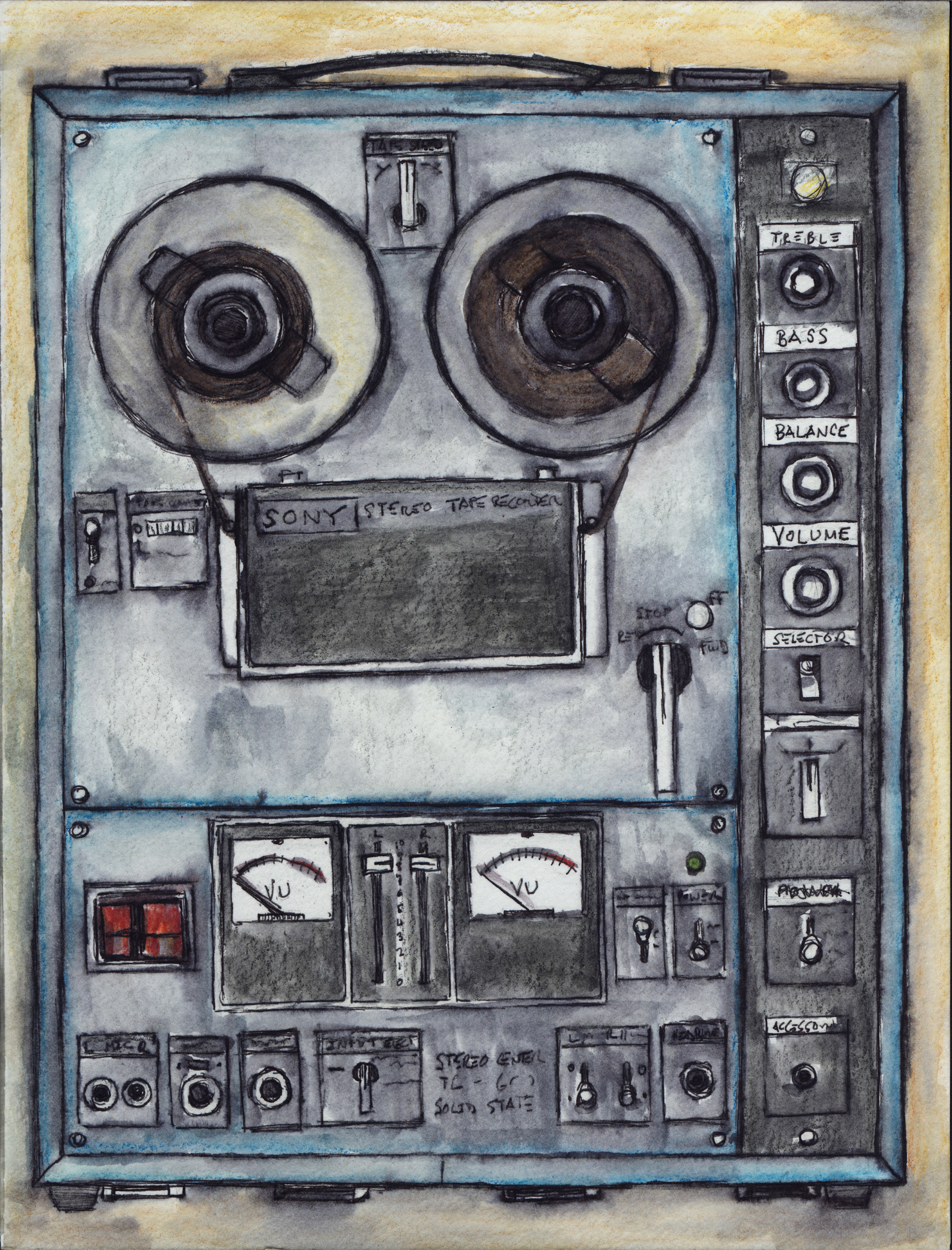A while back, Tape Op contacted me to review Roswell's follow-up to their Mini K47, the Delphos. I had heard good things about the Mini K47 [Tape Op #109], and knew Matt McGlynn to be the mind behind the resource-rich microphone website, recordinghacks.com, as well as one of the best DIY microphone parts websites, microphone-parts.com.
The pair of Delphos mics arrived very well packed, inside a sturdy Roswell-labeled flight case, along with a nice, screw-in shockmount that incorporates a unique cutaway in its design, for better close-mic positioning. I was immediately impressed with the weight and quality of the mic. The Delphos looks the part of a mic that's in a much higher price bracket. Its body sports a glossy, metallic, dark-blue enamel paint job and an embossed brass nameplate. It certainly looks like a quality piece.
Being the gear nerd that I am, I had a peek inside the mic. The Delphos is very much a boutique microphone, built by hand in California. According to Matt, the mic body and some of the components are imported, but the PCB is manufactured and populated in the US, and the assembly, testing, and tuning of the mic happens in the Roswell shop. The Delphos uses a new-old-stock JFET that is selected for low input capacitance, and each one is individually and manually biased in the Roswell shop for maximum headroom. The Delphos is built using low-noise transistors and metal-film resistors (with 1% or better tolerance) throughout, as well as USA-made polypropylene output capacitors. And the circuit layout is designed to insulate the high-impedance components, to minimize noise.
The 34 mm, dual-backplate capsules are selected for high sensitivity and consistent frequency response. An acoustic sweep test is performed on every finished mic, and each one is hand-tuned to meet a strict performance specification.
Matt states that the Delphos is not a recreation of any vintage circuit. For comparison's sake, it may fall more closely in the Neumann U 87 camp, in that the Delphos uses a K 67–style capsule coupled to a circuit with corrective EQ. However, the Delphos has a more extended frequency response that's relatively flat in amplitude from above 12 kHz all the way down to 20 Hz. And unlike the U 87 with its transformer-balanced output and three polar patterns, the Delphos is transformerless, and its pattern switch has selections only for cardioid and omni. A −10 dB pad switch is also included.
I was able to use the pair of Delphos mics on a variety of sources while tracking an indie rock project. For overhead duties as well as for stereo room and front-of-kit, the Delphos did not disappoint! They always sounded full and balanced, with a nice top end that was never harsh. The extended frequency response of these mics makes them an easy choice for any drum applications.
Similarly, the Delphos was a treat to use when mic'ing up a Swart AST guitar amp. This amp has a strong midrange presence, so given the balanced nature of the Delphos, I didn't worry about too much buildup in this range. I paired the Delphos with a Samar VL37 ribbon mic, mixing the Delphos track under the Samar for a touch of definition. Smooth! It was a beautiful pairing.
For acoustic recording, my go-to is usually my Neumann KM 84, but I swapped it for the Delphos during this session. Placed 12–18'' out from the 12th fret, looking towards the soundhole, the Delphos delivered a rich and full-bodied sound, perfect for the singer-songwriter vibe that suited this track well. With the mic's upper frequency extension, the sparkle and jangle captured in the guitar's top end was a perfect match for the rich and balanced low end.
For vocals, the Delphos really earned its keep. I found myself using little to no EQ to get vocals to sit in the mix. The air of the vocal mic was really nice, and we were able to work the proximity to good effect. I couldn't hear much in the way of capsule overloading or distortion. The Delphos is a clean mic and really captures true to the source. I also didn't detect much "zing" from the capsule that is often found in budget-friendly mics.
I did miss having a figure-8 polar pattern, as I wanted to try mid-side mic'ing during drum tracking, as well as use the pair to mic the vocal and acoustic simultaneously during the singer-songwriter session (to take advantage of the strong nulls typical of figure-8 mics). But really, that's about the only thing I can critique. It's a small compromise for such a versatile mic.
I'm really, really impressed with the Delphos. It's a fantastic workhorse mic that shines in a variety of situations, and its price puts it within reasonable reach for most studios and recordists. The Roswell Delphos should easily earn a place even within the most well-stocked mic lockers.




_disp_horizontal_bw.jpg)